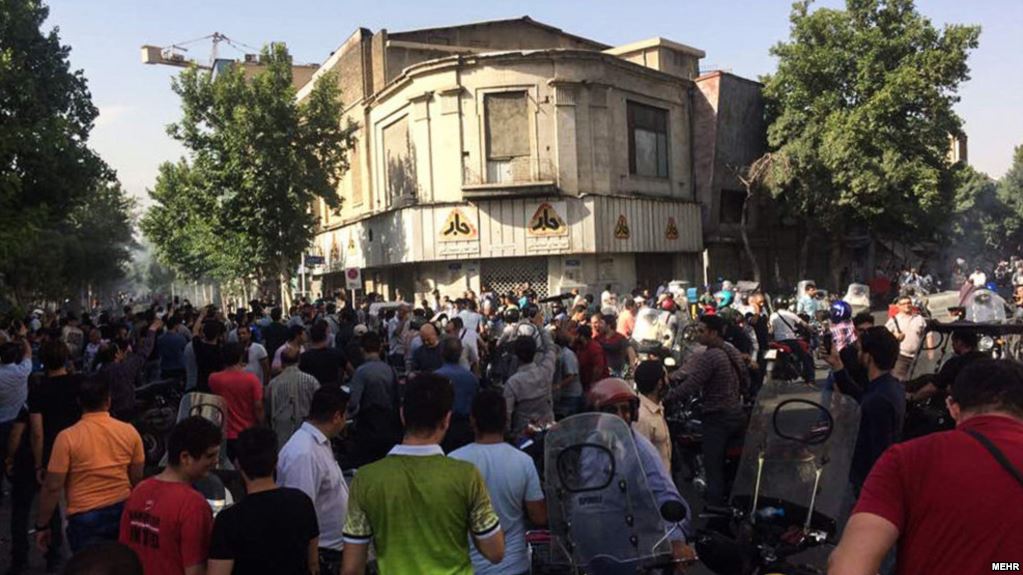
The official unemployment rate has reached 27 percent among young Iranians and over 40 percent among university graduates, says Omid Ali Parsai, chairman of the Iranian Statistical Center.
Parsai added that some 550 thousand jobs have been created in Iran during the first nine months of the current Iranian year which started on March 21, 2018. However, the country lags behind in terms of creating employment opportunities as the projected figure for the number of jobs needed annually is 900 thousands, said the chief statistician.
The official Iranians figures seem barely convincing. Iran’s methodology in estimating the number of people with jobs is to count one hour of work per week as employment. But this is not the only reason why unemployment figures released by Iranian officials are less than reliable.
For instance, the economic growth rate for the past six months has declined in comparison to the average growth rate last year. As a matter of fact, in the last few months of 2018, Iran officially entered a deep recession. The decline must have affected the unemployment rate, but there is no trace of it in the statistics Iran has released.
Venezuela Style
Meanwhile, Iranian employment figures are based on limited samples but their results are generalized to the entire heterogenous society. Such a methodological flaw will affect the results. So, even if the unemployment figures have not been manipulated, they are questionable from a methodological point of view. Therefore, true unemployment figures for this year can be much higher that what has been announced.
Reasons for Youth Unemployment
Iran’s economy which is reliant on government initiatives, has very little growth as it is hardly capable of creating new jobs while there is increasing demand for jobs by young job seekers in the market. Still this is not the only problem.
One of the characteristics of the Iranian government is the discrimination it imposes on the job market. Individuals who at least pretend to be loyal to the Islamic Republic are in a better position to be employed by government employers. According to international assessments, Iran’s job market is inefficient because of widespread discrimination. The biggest employer in Iran is the government that selects workforce based on their declared loyalty to official government ideology. Furthermore, young workers are assimilated into the market at a slower pace, particularly if they are not properly trained and skilled.
Alarming Youth Unemployment
According to official figures, the rate of youth unemployment is more than twice larger than the general unemployment rate. Such a high unemployment rate is usually indicative of a crisis in the job market.
Employment depends on many macro-economic variables such as economic growth, short term and long term investment and the production capacity of various work places.
Based on the latest figuress by the Iranian Statistical Center, during the first half of the current year the rate of investment and economic growth have had a free fall in the areas of industry and agriculture. There has also been a sharp decline in production particularly in the automobile manufacturing sector.
Based on economic projections for the next 20 years, as well as based on plans for the previous five years, at least 8 percent economic growth is needed in order to reduce unemployment rate. Such a growth has not materialized, and at the same time, there has been a rise in accrued unemployment.
Unemployment next year
The World Bank’s forecast for next year indicates a minus 3.7% economic growth and a 31.2% inflation rate. The Iranian parliament research arm actually predicted worse numbers. The new statistics released by the government supports this forecast at least in the first half of this year.
A fall in Iran’s oil revenues in the second half of this year will further slow down the Iranian economy which is heavily reliant on oil. As a result of sanctions, short term and long term investment will be curbed. On the other hand, pressures on Iran’s banking system will affect the import of machinery and reduce the activity of industrial units. This, in turn, will force industrial units to decrease their work force.
The rising unemployment and falling purchasing power will even affect units that produce essential goods. Plummeting sales are likely to affect employment rates in these units. Unemployment is likely to increase with the fall in demand, as unemployment will lead only to even more unemployment.












 Posted in
Posted in 











